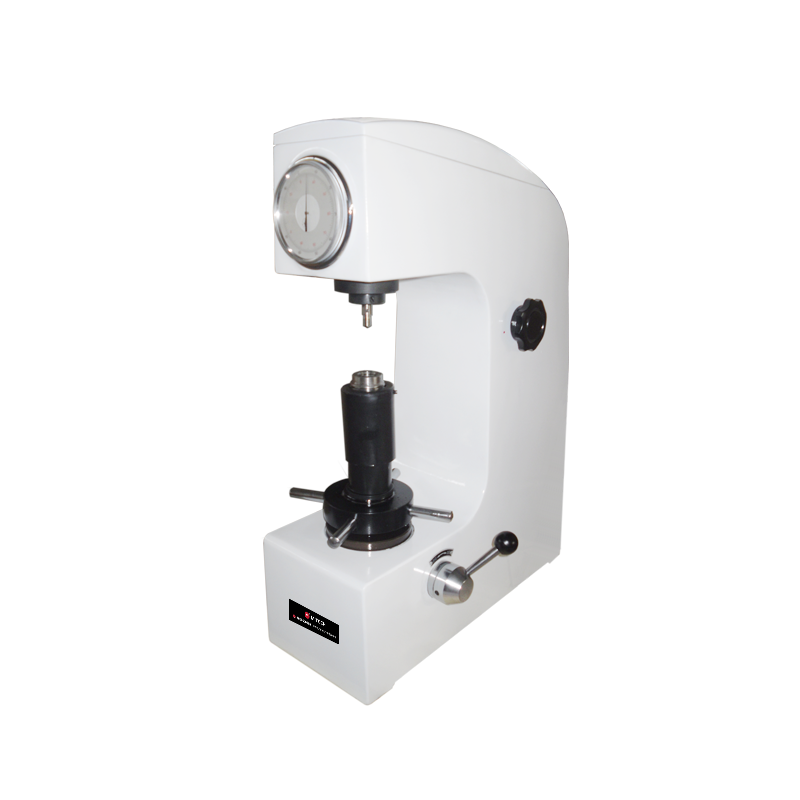


Mitech MHR-45A Surface Rockwell Hardness Tester
Mitech
HR15N:70-91、HR30N:42-80、HR45N:20-70、 HR15T:73-93、HR30T:43-82
510*212*700mm
53*40*73cm
85kg
Product
 Overview
Overview Graphic
Graphic Technical
Technical Configuration
Configuration Related
Related
Product
- Overview
- Graphic
- Technical
- Configuration
- Related
-
 Product Overview
Product OverviewMitech MHR-45A Surface Rockwell Hardness Tester, based on the mechanical principle of conical diamond or hard alloy indenter pressing into the sample surface to produce indentation, realizing the material hardness measurement by measuring the depth of the indentation. According to statistics, Rockwell hardness testing is the most widely used hardness testing method in metal processing industry, which utilization ratio is more than 70%. With stable performance, easy operation, dial reading intuitive and convenient, it is widely used in metal processing and manufacturing, various metal material’s failure analysis and other fields like colleges and research institutions, and it is the sophisticated detection equipment to test the surface hardness of metal and other materials.
 Function & application
Function & applicationl Used for quality control in metal processing manufacturing
l Used for failure analysis testing of metallic materials;
l Demonstration experiment for education and teaching in Colleges and Universities;
l Hardness testing of materials in scientific research institutions.
 Working Principle
Working PrincipleThe surface Rockwell hardness test is based on a diamond cone or a diameter of the ball head, with a small test force to press the sample surface hardness value. In the test, the initial test force is first loaded and the main test force is loaded. After pressing the specimen test surface, the main test force is removed, and the surface Rockwell hardness value of the measured metal material can be determined,according to the depth of the specimen indentation while retaining the initial test force.
As is shown in the figure below, 0-0 is the position where the diamond indenter is not yet in contact with the specimen. 1-1 for the initial test force under the action of the indenter position, press the depth of h1, the initial test is to eliminate the sample surface.It is not clean which is caused by the accuracy of the test results. In the figure, 2-2 is the position of the indenter under the total test force (initial test force and main test force), the pressing depth is h2.3-3,and the position of the indenter after unloading the main test force, for metal elastic deformation will produce a certain recovery, so the actual pressure into the depth of h3 h3.The main test force caused by the plastic deformation of the indenter into the depth of h is h3-h1. Rockwell hardness value determined by the size of h, the greater the depth h, the lower the hardness; the other hand, and the higher the hardness. Each press 0.001mm is a surface Rockwell hardness unit. The hardness value obtained is called the surface Rockwell hardness value, denoted by the symbol HRN (T).
 Working Conditions
Working Conditionsl Operation Temperature:10~30℃;
l The surrounding environment should avoid of vibration, strong magnetic field, corrosive medium and heavy dust.
 Instrument Features
Instrument Featuresl Widely used for surface Rockwell hardness test with a variety of metal and non-metallic materials;
l Using the classic design of mechanical device, data reading intuitive and convenient, easy operation;
l Fast test speed, small indentation of the workpiece after testing ;
l Option for various specifications of the indenter, support many types of Rockwell hardness scales testing ;
l Diamond indenter, durable wear and accurate measurement;
l Consistent with GB/T231 and other relevant standards at home and abroad.
 Operating Method and Attentions
Operating Method and Attentions Instrument Maintenance
Instrument Maintenancel Pay attention to palm the instrument for carrying to forbid falling across. Please fix well the measuring lever, counterweight
and boom before carrying;
l The test personnel should follow the operating procedures.Before and after the test,it should be repeated with standard
block calibration equipment. If a long time idle, it should be re-booted after several proofreading, when it is stable after the
test results, and then test its parts;
l During testing, to ensure accuracy, please make sure the distance between the adjacent indentation center and the
distance from the indentation center to edge of the specimen is greater than 3mm;
l Normally, the first point is only used to offset the gap of each support surface without needing to record the test result.
Record the statistical test result from the second point;
l It is strictly prohibited to turn the variable loading handwheel when the instrument load or unload the test force. Rotating
the handwheel forcibly will cause the internal gear dislocation, test force in chaos and even damage the internal parts of
the instrument;
l If the specimen has visible deformation marks on the back and edges, the test result would be useless. It should choose
the intender or test force to test again;
l When not in use for a long time, please cover the dust cover to prevent dust into the instrument interior. And the
hardness block, indenter should be coated with antirust oil to prevent rusting after using;
l Long time after the re-enabled,it should be preheated the electrical components before test
l The hardness tester should be calibrated at least once a year to ensure its accuracy;
l Please regularly put a small amount of oil on the screw and the handwheel interface;
l Don’t disassemble the instrument without authorization, for maintenance related matters, please contact MITECH after-sale service department with 4000600280
-


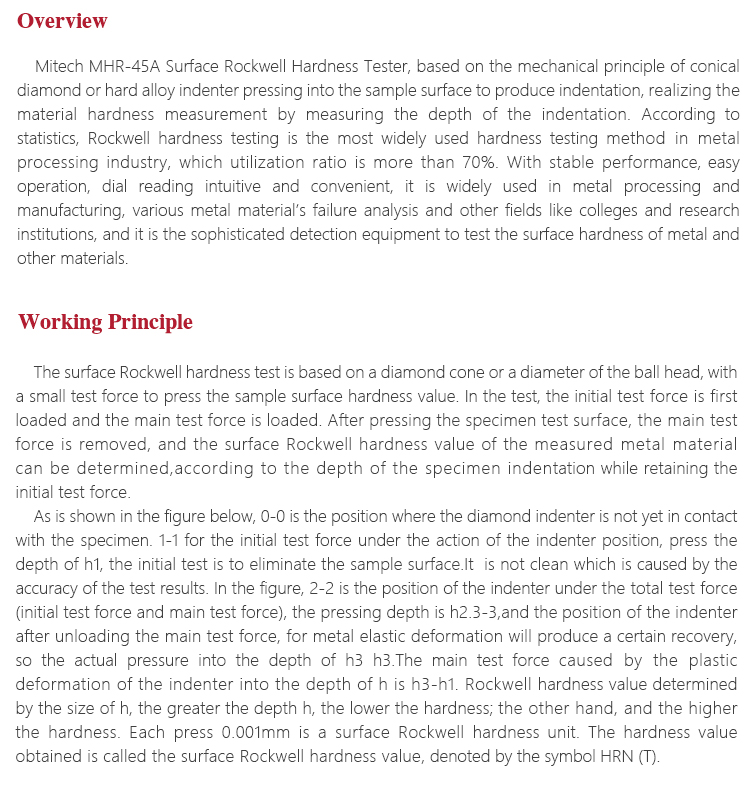

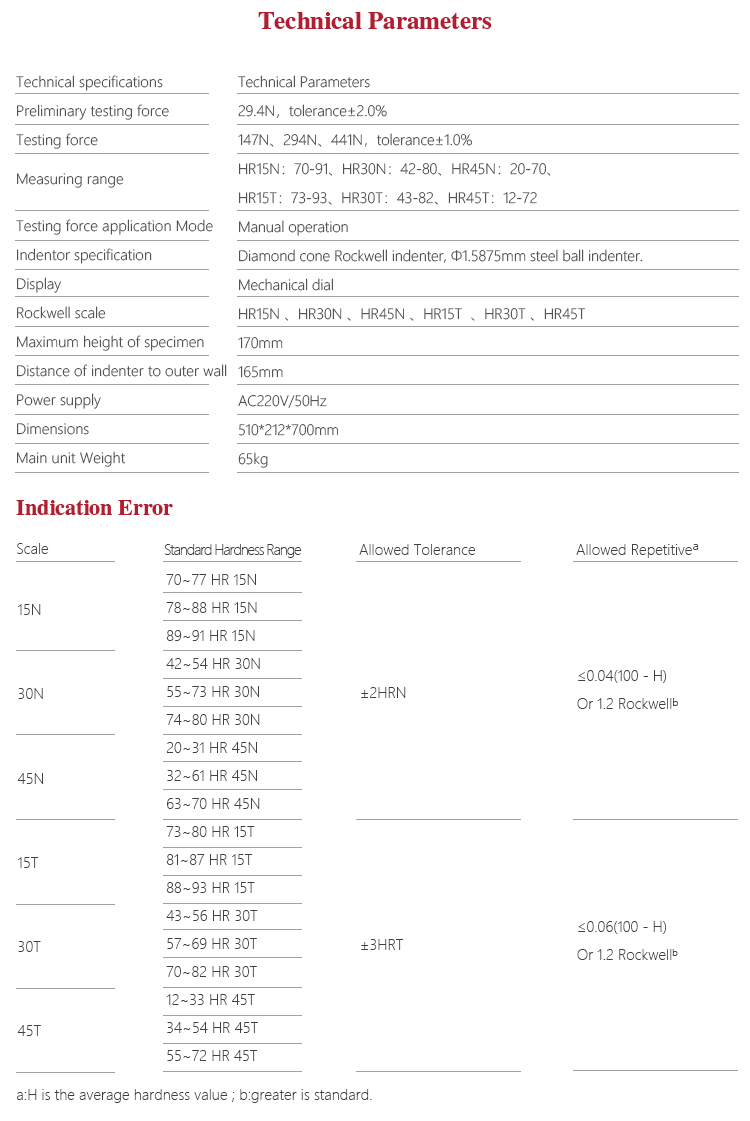
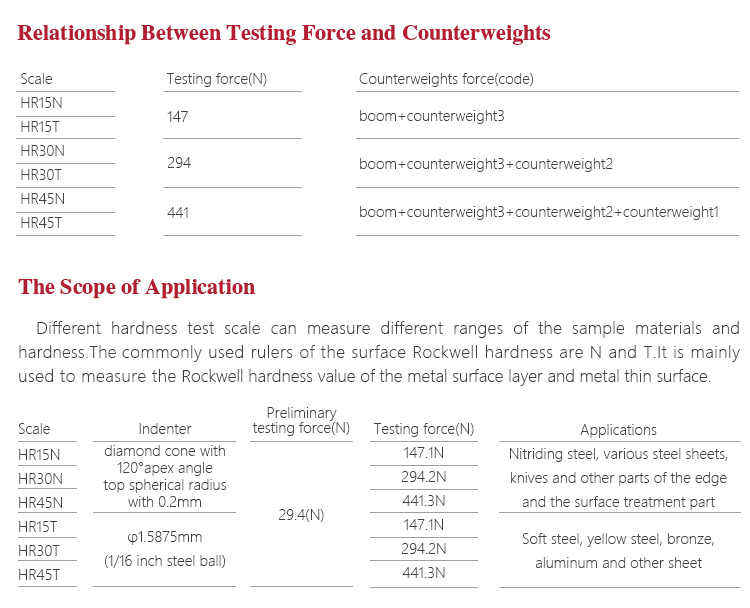
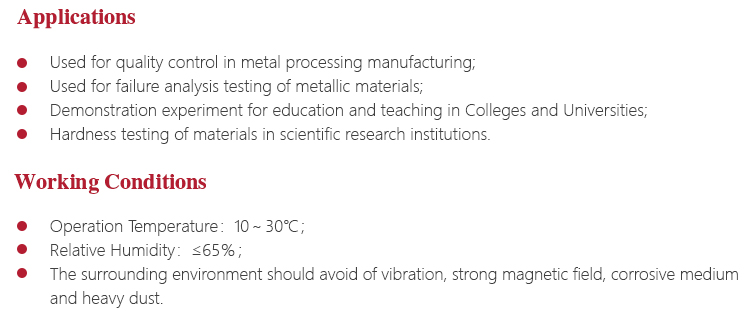

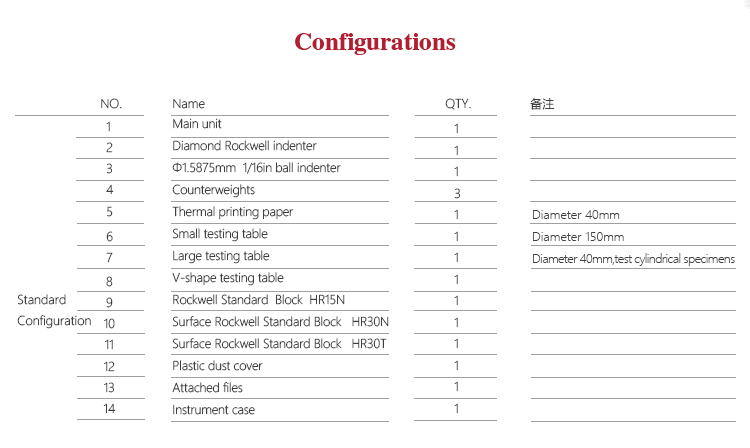
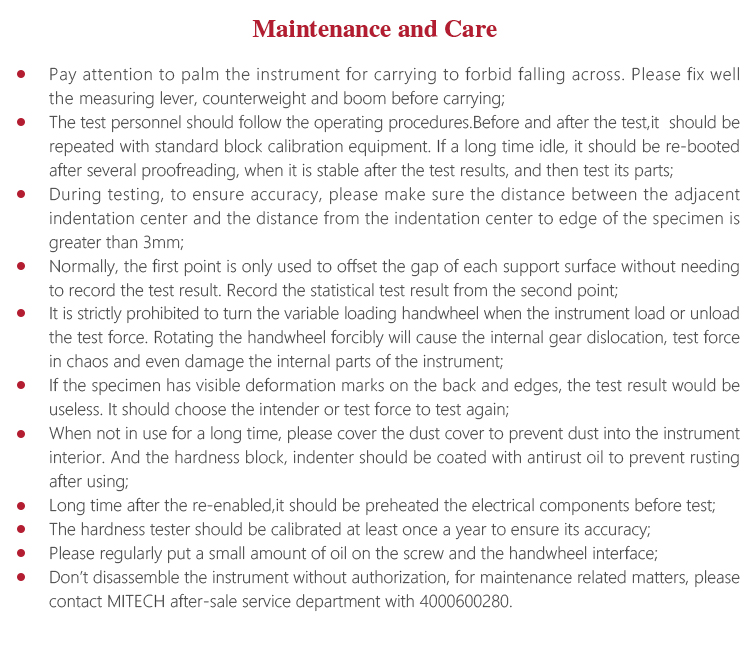
-
Preliminary testing force 29.4N,tolerance±2.0% Testing force 147N、294N、441N,tolerance±1.0% Measuring range HR15N:70-91、HR30N:42-80、HR45N:20-70、 HR15T:73-93、HR30T:43-82、HR45T:12-72 Testing force application Mode Manual operation Indentor specification Diamond cone Rockwell indenter, Φ1.5875mm steel ball indenter. Display Mechanical dial Rockwell scale HR15N 、HR30N 、HR45N 、HR15T 、HR30T 、HR45T Maximum height of specimen 170mm Distance of indenter to outer wall 165mm Power supply AC220V/50Hz Dimensions 510*212*700mm Main unit Weight 65kg -

Mitech MHR-45A Surface Rockwell Hardness Tester Mitech MHR-45A Surface Rockwell Hardness Tester, based on the mechanical principle of conical diamond or hard alloy indenter pressing into the sample surface to produce indentation, realizing the material hardness measurement by measuring the depth of the indentation. According to statistics, Rockwell hardness testing is the most widely used hardness testing method in metal processing industry, which utilization ratio is more than 70%. With stable performance, easy operation, dial reading intuitive and convenient, it is widely used in metal processing and manufacturing, various metal material’s failure analysis and other fields like colleges and research institutions, and it is the sophisticated detection equipment to test the surface hardness of metal and other materials.
-







